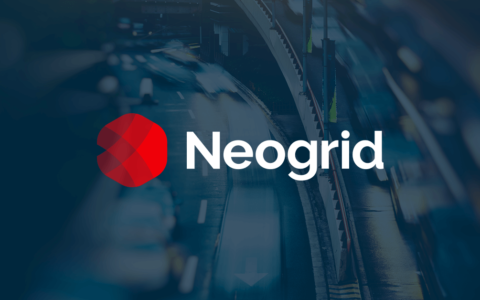
Understand what we can expect from the future of AI and how its applications in companies can revolutionize the consumer chain
Artificial Intelligence (AI) had little connection to the consumer world until a few years ago. This trend has been rapidly changing over the past decade. The pandemic also served as a significant catalyst to accelerate this process. Now, it is used on a large scale by companies worldwide.
For example, a 2022 study by McKinsey & Company shows that 50% of businesses already use some type of AI in their operations.
Whether it’s to better understand how to position products in the market or to provide a more personalized shopping journey for the consumer, the fact is that using AI has a positive impact on results.
In this post, you will understand what we can expect from the future of AI and how its applications in operational management help to revolutionize the consumer supply chain.
What does the future hold for artificial intelligence?
Between 2022 and 2023, we witnessed a technological evolution that could be the “new gold rush”. We are talking about generative artificial intelligence – a technology capable of completely changing the future.
This resource has the ability to learn complex behavior patterns from massive amounts of data. Great examples of this are the tools that create text like Gemini and ChatGPT, or images like DeepDream.
The technical construction of generative AI allows it to go beyond conventional learning, enabling constant evolution without the need for human programming.
Additionally, in the future, this technology will be capable of performing an ever-increasing number of tasks. Furthermore, the trend is for these tools to increasingly approach the ability to assume human language as a tool.
This will create a deeper way to connect with humans, helping to change habits and behaviors. And, of course, this includes consumption patterns.
Artificial Intelligence in operational management.
While we’re not there yet, there is a series of technologies that employ artificial intelligence to optimize processes in the consumer supply chain. Thus, companies will be better prepared to deal with the operational challenges that will follow in the coming years.
We list some of them below:
1. Visual Search and e-commerce
Visual Search is a new way of conducting internet searches. The user enters a photo in the search and artificial intelligence “reads” the information to relate it to results on the topic.
In the consumer chain, this can make the shopping process more visual and impact the routine of e-commerce, for example.
Consumers can easily discover, before buying, similar products, where they are sold and the price difference between them. This causes brands to pay more attention to the images they offer as content.
As users may come across many similar contents in the search, it is essential to stand out at first glance to avoid losing sales.
2. Tailored promotions
In-depth knowledge of consumer behavior enables the creation of more personalized strategies for each audience, such as customized promotional actions by location or purchase profile, for example.
The technology applied to the promotional flow uses sales data and advanced analytics to identify and segment customers who are more likely to purchase specific products.
Another example is knowing the shopper’s behavior based on consumption habits on certain days of the week. Thus, it is possible to develop assertive campaigns for each profile. This leads to excellent results in sales.
3. Virtual assistants and chatbots
Virtual assistants and chatbots are AI-powered tools designed to interact with consumers or even employees, often serving as the first point of contact and interaction a customer has with a brand.
This technology is one of the top trends for businesses in the coming years, as it can deliver relevant information, solve problems, and increase customer engagement, reducing friction in transactions and sales efforts.
Currently, one of the primary applications is in Customer Service, where they can cater to the increasingly connected and demanding customer who expects 24/7 availability.
Additionally, some companies use virtual assistants to interact with employees and provide operational support, offering information about procedures or resolving issues.
4. Smart pricing and predictive analytics
The digitalization of consumption has created a barrier-free competitive landscape, making smart pricing a major advantage for businesses. Artificial intelligence plays a central role in this process.
Predictive analytics, for instance, is a form of artificial intelligence that uses historical data and mathematical models to forecast future events, based on demand, costs, seasonality, competition, and consumer behavior.
This allows businesses to predict sales trends and identify growth opportunities to maximize profitability and stand out in the market.
5. Smarter demand production
One of the applications of AI is to improve the efficiency of demand production for manufacturers. To achieve this, a technological solution monitors information at the point of sale, helping to project how much needs to be produced and optimize inventory.
For this, the technology collects sales and inventory data from retailers, so artificial intelligence can process and deliver information through indicators and reports on product performance.
AI also helps in inventory optimization, supporting the identification of slow-moving products, excess inventory, and other improvement opportunities.
This not only reduces costs but also ensures more sustainable production aligned with consumer preferences.
6. Augmented Reality (AR) for manufacturers:
This is a trend that is starting to be explored worldwide and is expected to expand in the coming years. AI combines elements of the real world with virtual ones to create a real-time interactive experience.
It overlays digital information, such as images, videos, 3D graphics, or other virtual objects, onto the physical environment. Visualization is done through a device, such as a smartphone, tablet, or special AR glasses.
The evolution of generative AI, which we discussed at the beginning of this post, will certainly impact AR, accelerating the design and development of this visualization, a process that requires a lot of time and resources.
For manufacturers, augmented reality can be used in product design and prototyping, maintenance and operational safety, as well as quality control.
Conclusion
As we have seen, the use of artificial intelligence in business management helps to keep up with the revolutions in consumption because it relates to key characteristics of new consumers: speed, personalization, and agility.
And, in the future, this will become increasingly evident. Thus, to ensure success in the consumption chain, companies will need to automate complex processes, create unique experiences, and make increasingly accurate and fast decisions.
That is why the use of technological solutions that employ artificial intelligence is inevitable, and companies that know how to leverage the power of this resource will have an advantage to thrive in a constantly evolving market.
If you enjoyed this post, don’t miss any exclusive content from Neogrid. Click here and access over 150 materials on how technology and artificial intelligence enable operational efficiency.




